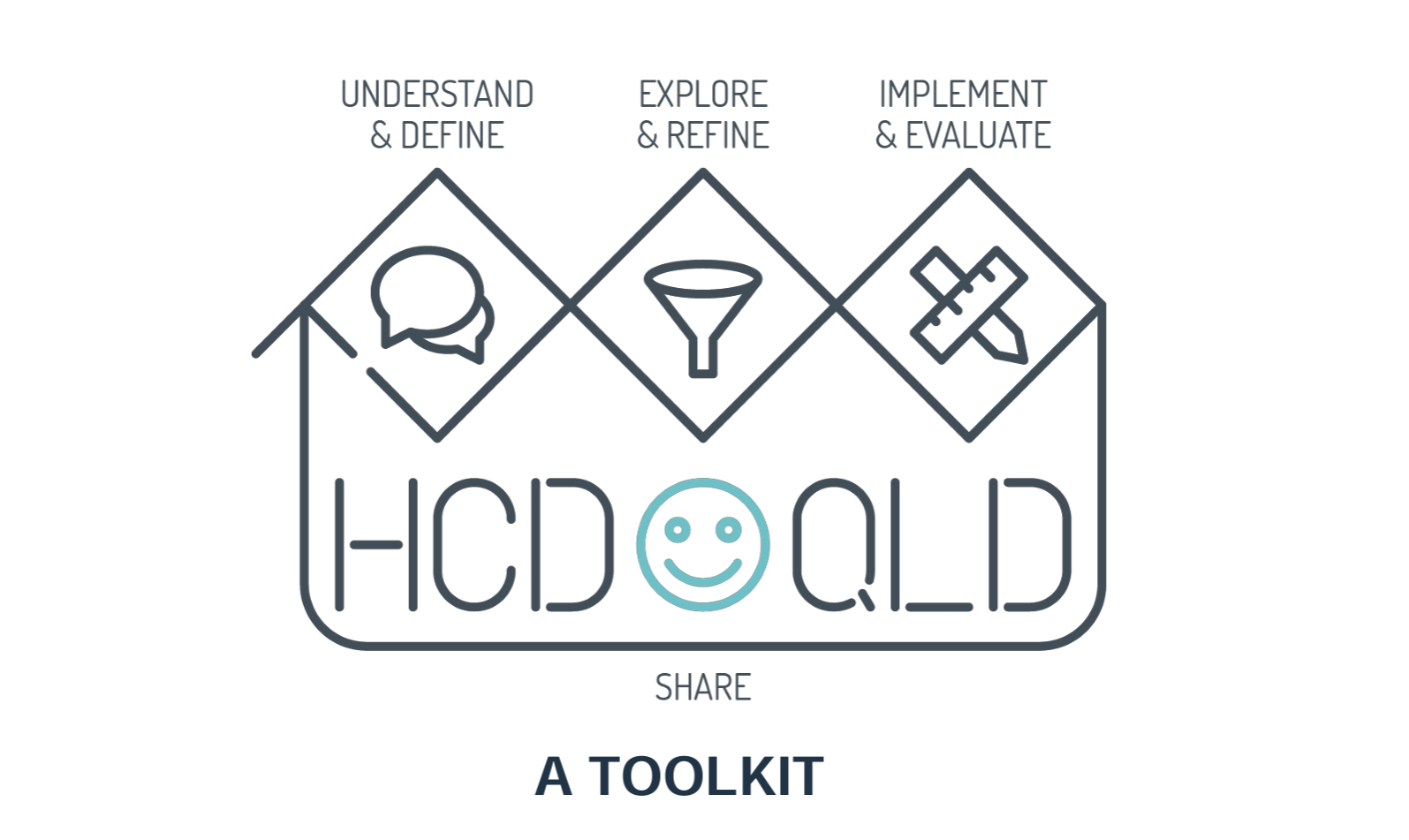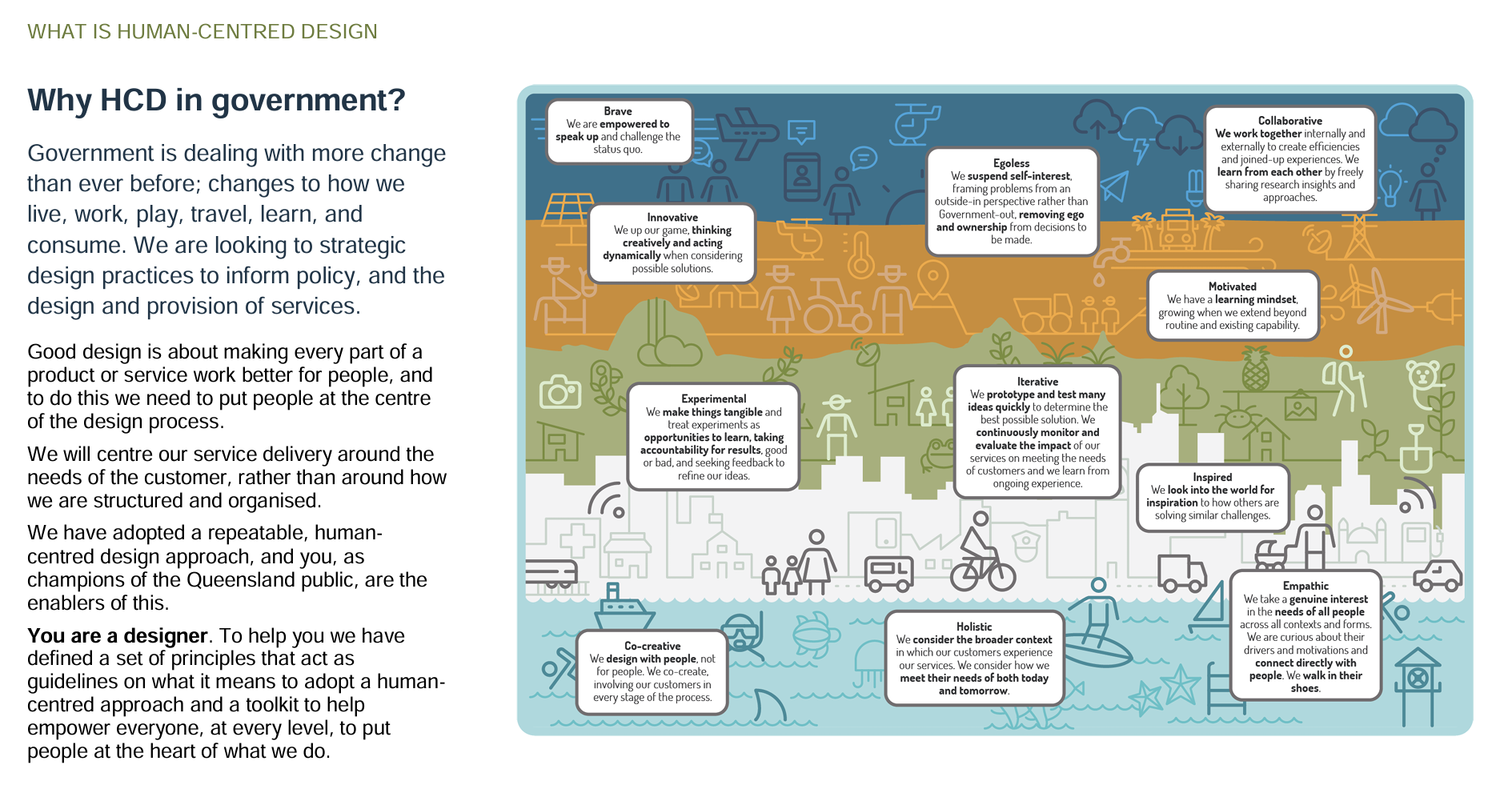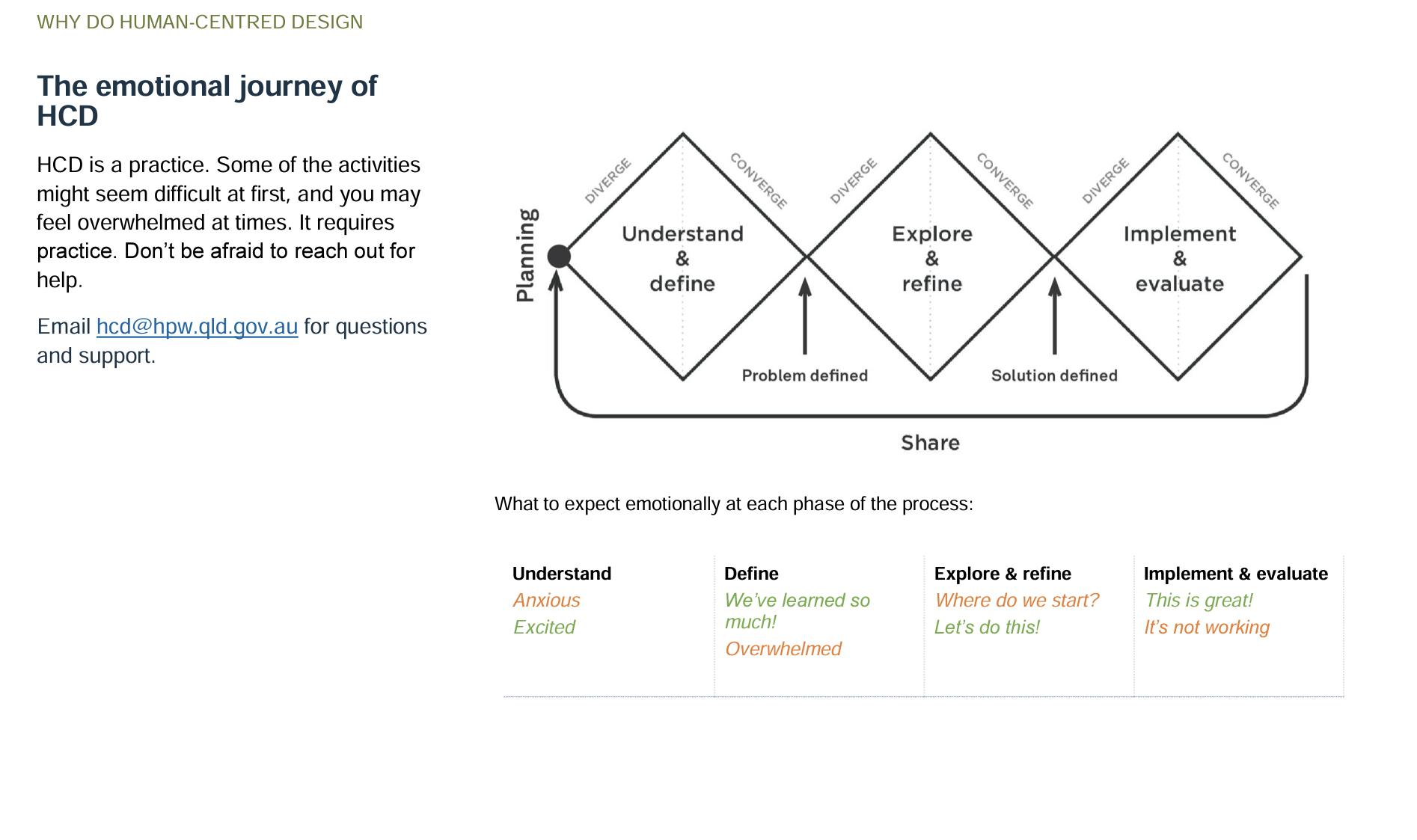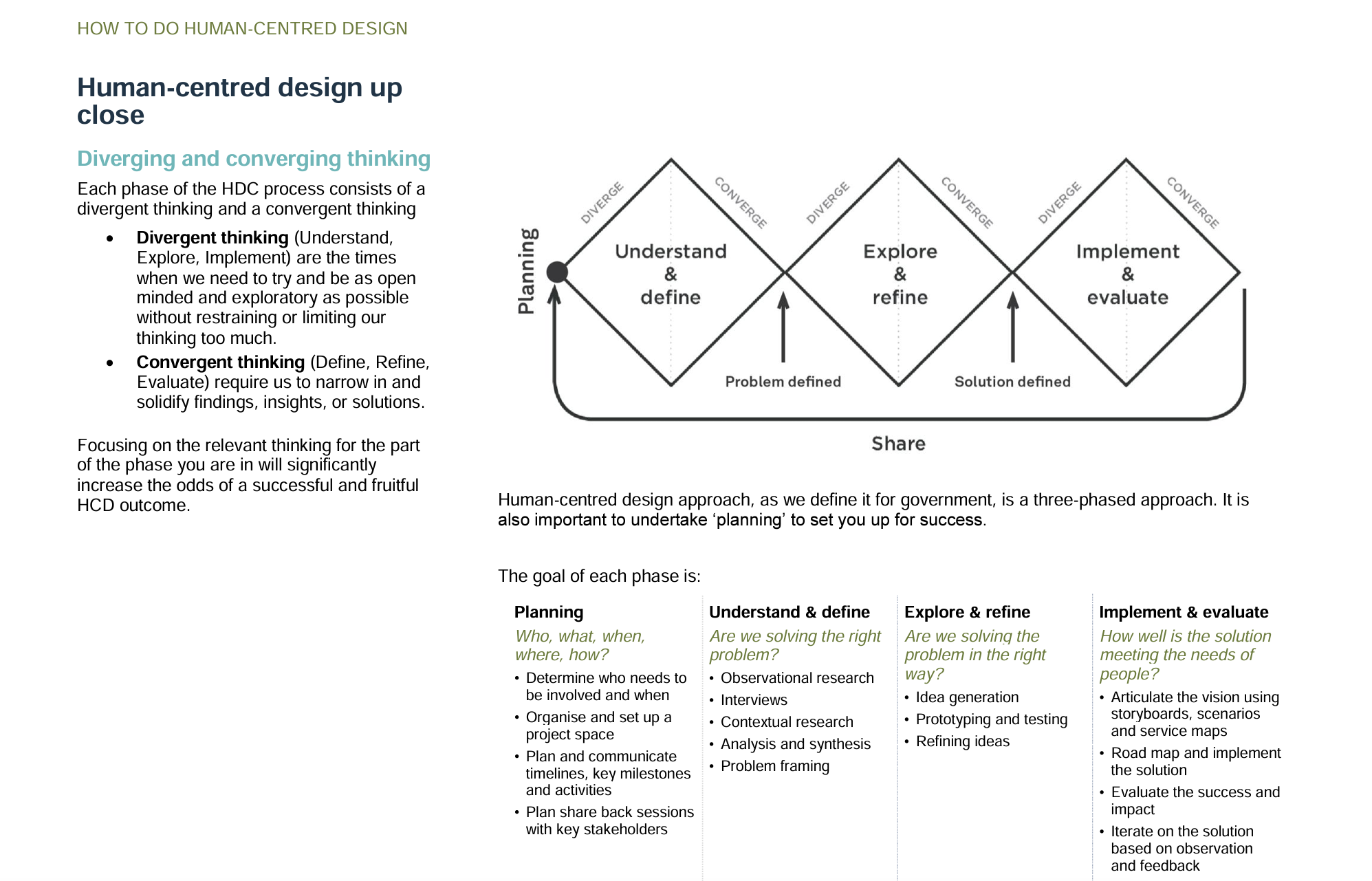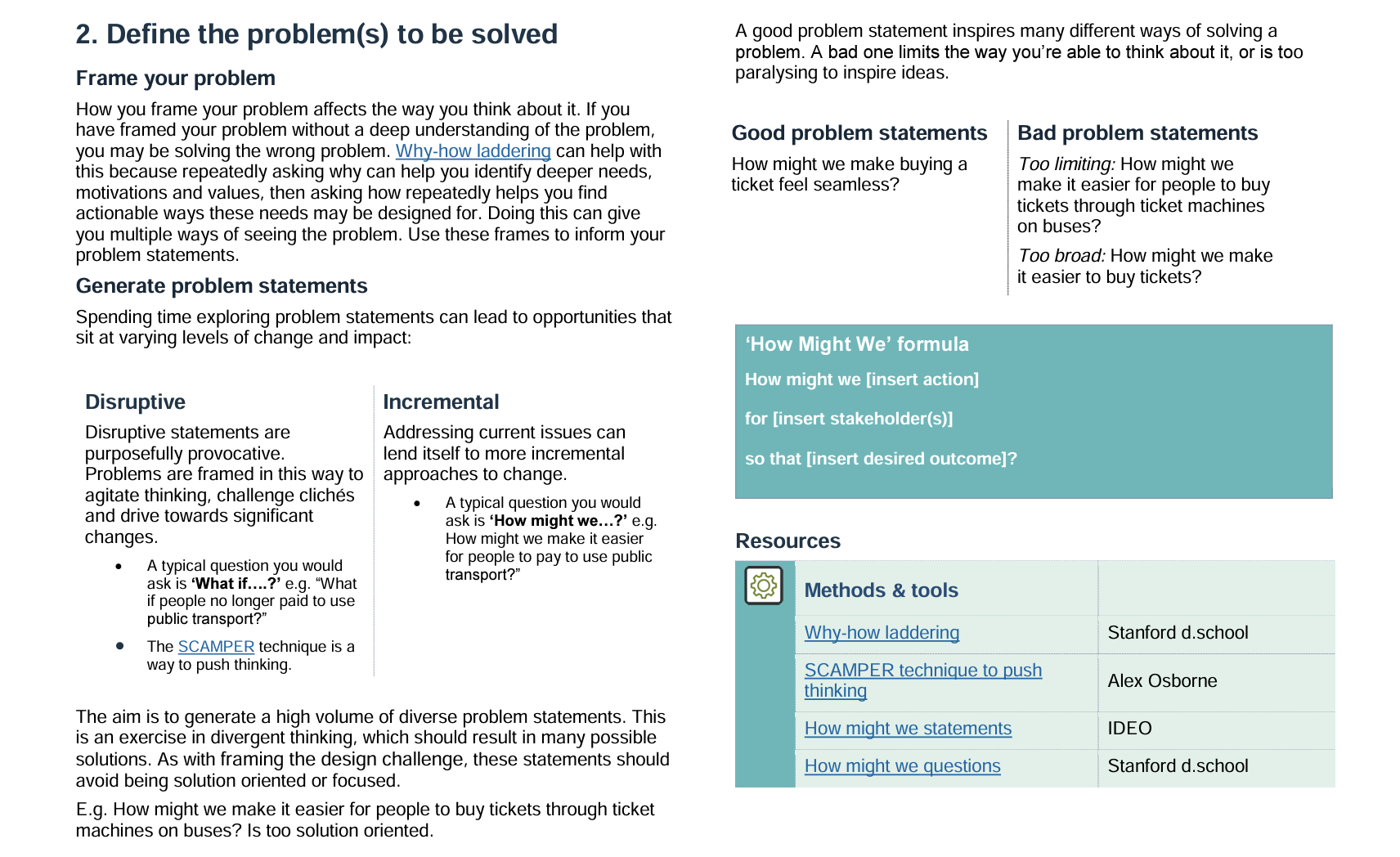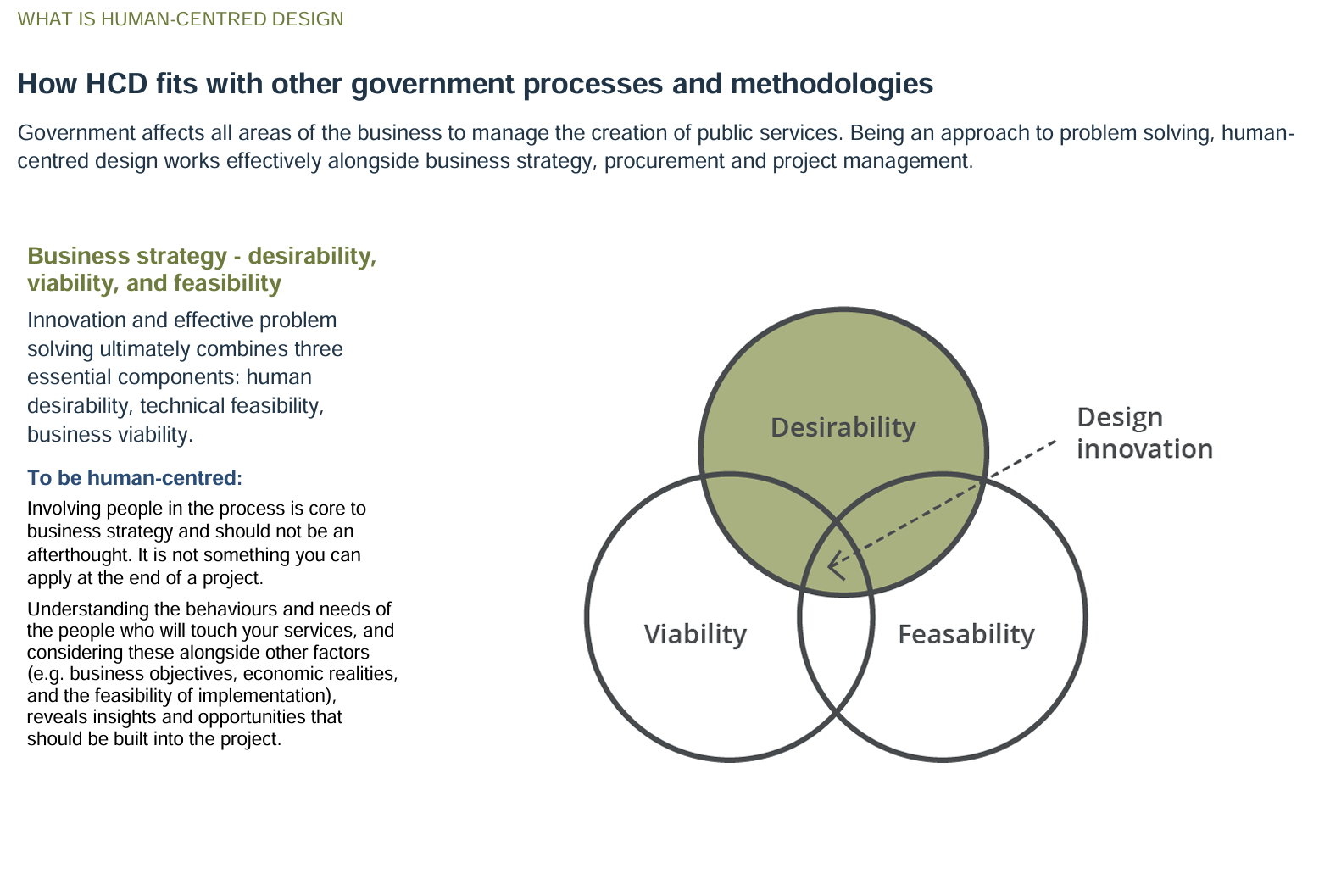Useful Human-centred Design Toolkits for your next project
Don't know where to get started with your next co-design or human-centred design project? We were in the same boat many years ago. Luckily, there are a number of incredibly useful Human-centred design toolkits that you can familiarise yourself with that will help get you started.
What is human-centred design (HCD)?
Human-centred design (HCD) is a framework that prioritises the perspectives and needs of the people at the very heart of the design process. It's an empathetic approach to problem-solving that seeks to understand the user's experience and strives to create solutions that are efficient and effective but also profoundly resonant with the intended audience.
HCD is invaluable. It goes beyond the superficial features of a product or service to address the core needs and challenges of users, leading to outcomes that are more satisfying, sustainable and meaningful in the long term.
The importance of Human-centred Design is recognised across various sectors. However, it's especially crucial in health and community services, where the impact of design directly affects individuals' wellbeing and quality of life. By engaging with the users' experiences, service providers can ensure that the solutions they develop are not only accessible and easy to use but also truly enhance the lives of those they are meant to serve.
Three useful human-centred design toolkits
The Field Guide to Human-Centred Design (IDEO.org)
Human-centred design (HCD) is a creative approach to problem-solving that starts with understanding the needs of the people you're designing for. IDEO.org's Field Guide to Human-Centred Design reveals that while each HCD project is unique, particular strategies are universally effective and can be shaped by best-practiced working methods.
The video below is IDEO.org’s explainer video for how they interpret Human-centred design.
In the inspiration phase of HCD, building a deep understanding of the people you’re designing for is paramount. Through various interviewing techniques—be it individual, group, or with experts—designers cultivate a profound empathy that shapes the entire project.
This is where the design challenge is framed, and the audience is defined, setting a solid foundation for innovation. The process often involves creative exercises like collage-making or guided tours, which not only inspire but also uncover the subtle, unarticulated needs of the community. It's a dynamic and collaborative effort, drawing on shared energy and diverse perspectives to ensure the resulting insights truly resonate with the users' experiences and aspirations.
The ideation phase is about distilling insights and turning them into actionable ideas. Techniques like "How Might We" questions or creating frameworks help to focus the ideation process, ensuring that it's aligned with the people you're designing for. In implementation, strategies such as piloting and live prototyping allow us to test our concepts in real-world settings, iterate based on user feedback, and define success metrics for the project.
The guide breaks down this process into four digestible sections — mindsets, inspiration, ideas, and implementation — each packed with methods and exercises to foster continuous innovation. It's a comprehensive resource that keeps the community at the heart of the design process, from understanding the challenge to bringing a solution to market.
Check the IDEO toolkit out here: https://www.designkit.org/
Human-centred design playbook (Victorian Government)
The Victorian Government defines Human-centred design (HCD) as a creative strategy focused on crafting solutions with the end user's needs as the primary concern. It's about understanding people's experiences and creating responses that meet people's needs.
They also offer an explainer video but this one focuses on Human-centred Design in the public sector.
The Human-Centred Design Playbook, tailored to the Victorian public sector, offers a structured and comprehensive approach to applying HCD principles. The playbook is divided into several sections, providing an extensive roadmap for users:
Introduction to Human-Centred Design: this section acquaints users with the HCD philosophy, emphasising the importance of centring the design process around the people who will use the service or product.
Design plans: here, the playbook guides users through understanding a community or group, developing strategic recommendations or policies, and the cycle of prototyping, testing, and iteration to refine solutions.
Methods: a wide array of methods is presented, such as affinity mapping, co-design, ethnographic research, and user testing. These are tools that provide the means to gather insights and convert them into actionable design steps.
Outputs: the playbook outlines various potential outputs of the HCD process, including journey maps, design principles, prototypes, and user stories. These outputs are tangible representations of the design process that can be shared, evaluated, and improved.
Case studies: real-world applications of HCD within the Victorian public sector are showcased, providing practical examples of how the principles and methods of HCD have been applied to create valuable services.
Each section is crafted to support public sector professionals in adopting a user-centric mindset and applying it to their work, from the early stages of understanding the user's world to the detailed crafting of services and policies that meet their needs.
Head to their website to find out more: https://www.vic.gov.au/human-centred-design-playbook
Human-centred Design in Queensland Government toolkit
The Queensland Government defines Human-centred design (HCD) as a process that is used in creating services that are accessible and user-friendly for everyone. HCD places the user's needs at the forefront, ensuring that users are heard and that services are co-designed with the customers they aim to serve.
The Human-centred Design in Queensland Toolkit is a resource to empower individuals at all levels to incorporate HCD into their daily work. Whether you're a novice or seasoned in HCD practices, this toolkit is structured to enhance the user-centric approach in your projects.
The Human-centred Design in Queensland Government toolkit is organised into three main sections:
What is HCD?: This section explores the fundamentals of HCD, its importance in government, and how it aligns with other design approaches and government processes. It also discusses the application of HCD to various governmental challenges and how this toolkit complements additional design and innovation resources.
Why do HCD?: Here, the toolkit delves into the advantages of adopting an HCD approach, addresses common hesitations, and presents real-world applications within government settings. It includes case studies and a template to help users document their HCD practices.
How to do HCD?: This comprehensive section provides a step-by-step guide to the HCD process, including planning, understanding, defining, exploring, refining, implementing, and evaluating. It also offers insights into the emotional journey of HCD and resources for additional support.
This is a comprehensive guide of over 60 pages that guides you through each step in the Human-centred Design process. Each section is crafted to guide and support public sector professionals to effectively integrate HCD into their work, ensuring services are created with the user's experience at the heart of the process.
The HCD page on the Queensland Govt website includes a number of other templates and resources to help you navigate each step of the way.
For the toolkit and templates go to https://www.forgov.qld.gov.au/service-delivery-and-community-support/design-and-deliver-public-services/customer-experience-training/human-centred-design/human-centred-design-resources
Get started on your human-centred design journey today
The Field Guide to Human-centred Design, the Victorian Government's Human-centred design playbook, and the Human-centred Design in Queensland Government toolkit are three resources that embody the essence of HCD. Each one offers a unique perspective and toolkit tailored to different sectors, but all share a common goal to empower designers and decision-makers to put people at the centre of their work.
Beacon Strategies leverage the insights and methods from resources such as these to practice HCD and co-design. Our commitment to human-centred principles is reflected in how we approach each project, mindful of the complex needs and diverse experiences of service users.
We believe that the best solutions emerge from a deep and empathetic engagement with those we are designing for, and these toolkits help us achieve that standard of excellence. Whether you're beginning your journey in HCD or looking to refine your existing practices, we invite you to explore these resources and consider how human-centred design can enhance the impact of your work.
For a deeper dive into how human-centred design principles can transform your service delivery, visit our Co-Design homepage. Here at Beacon Strategies, we are committed to guiding you through a process that puts people at the heart of every solution. Discover how our expertise, informed by leading HCD practices, can elevate your projects and deliver impactful results.

